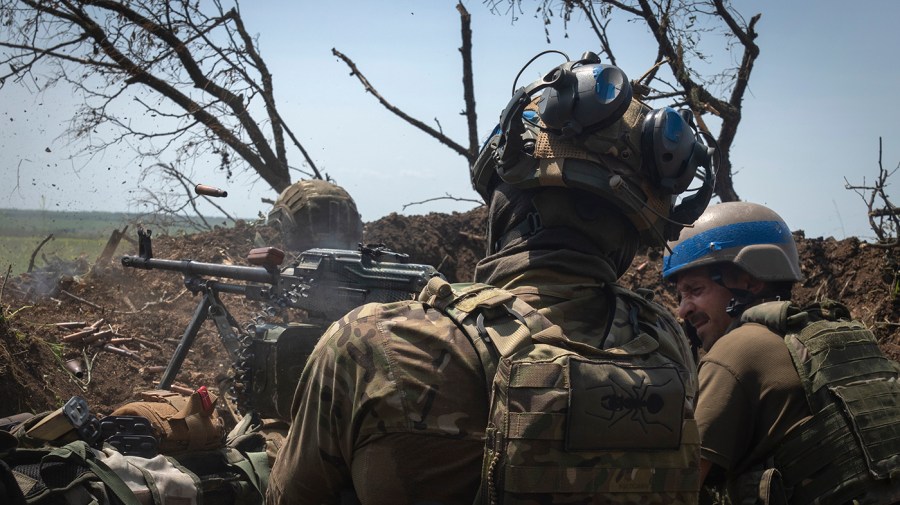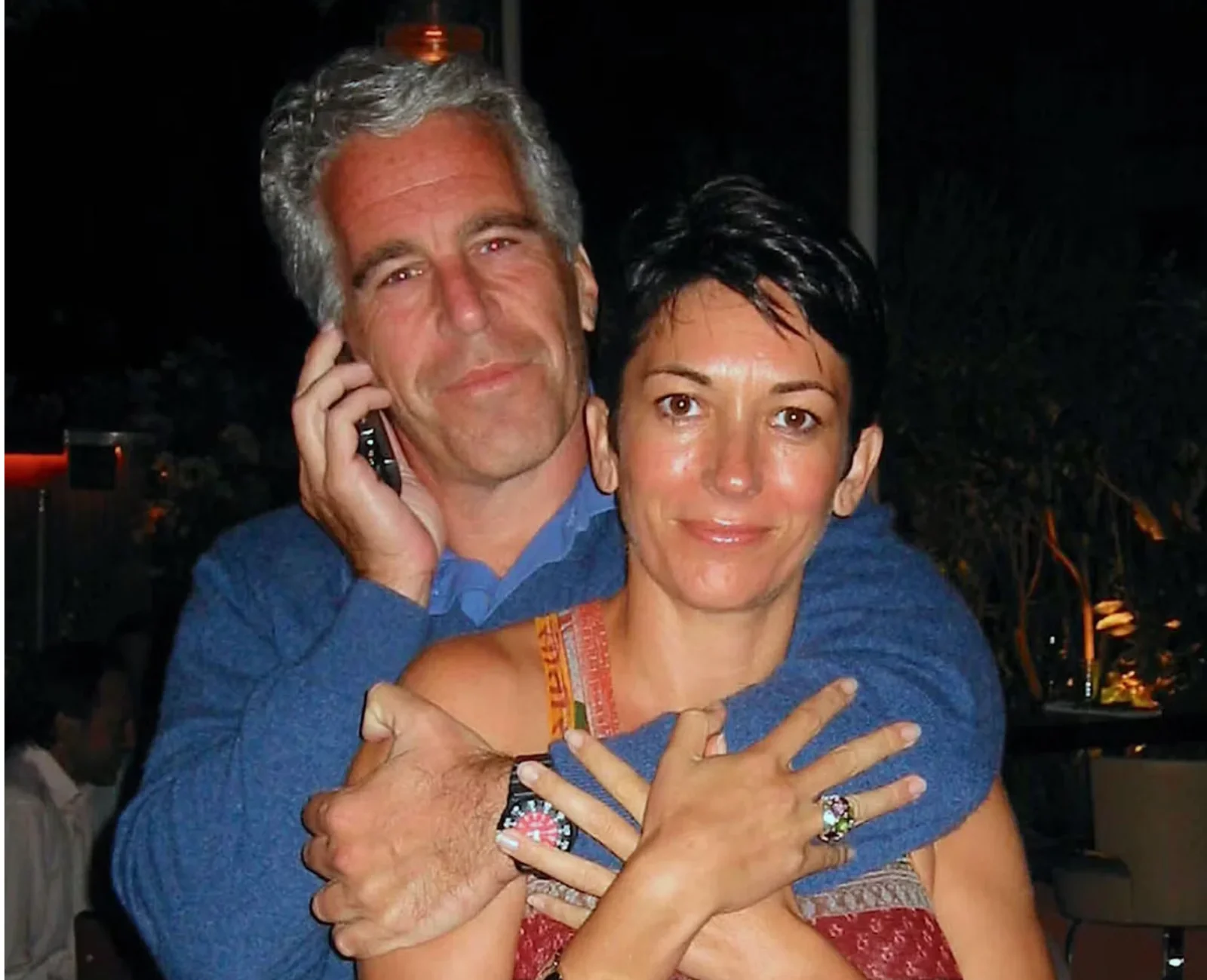World News
Russia launches its offensive with all eyes on Ukraine’s southern push on August 13, 2023 at 12:00 pm

With the world’s attention on Ukraine’s counteroffensive in the south, Russia has quietly launched a new offensive in the eastern Luhansk region, which analysts say is aimed at undermining the Ukrainian operation.
While the operation is much smaller in size and scope than Moscow’s winter offensive, Russia is making some progress and appears to be narrowing in on the city of Kupyansk, where Ukraine ordered an evacuation this week.
The Russian advance could pressure Ukraine amid a major offensive of its own and divide its attention. Any success could also paint a politically beneficial contrast with Ukraine’s slow-moving counteroffensive in the southeastern Zaporizhzhia region.
Mark Cancian, a senior adviser at the Center for Strategic and International Studies, doubted Russia can advance. But if it does, he said it would be a significant blow to Ukraine at a perilous moment.
“This is something worth keeping an eye on. If the Russians make some progress here, then this is a really big deal,” Cancian said. “It would be devastating to Ukraine’s narrative about the counteroffensive if the Russians were able to capture Luhansk — which I don’t think they can.
“But if they’re able to do that at a time when the Ukrainian counteroffensive was hung up in the defensive zone, that would be a very powerful failure and I think very discouraging to Western supporters,” he added.
Moscow’s winter offensive culminated at the end of March and Russian forces have since concentrated on defense against Ukraine’s counteroffensive. But Russia has never completely stopped its offensive operations, continuing a steady array of limited attacks across the 600-mile front in eastern Ukraine.
The Luhansk advance has picked up speed since mid-July, with fighting reportedly taking place mostly in rural and open fields, similar to the southern Zaporizhzhia region but in less populated areas.
Russia made rapid gains this week toward Kupyansk, a city in the Kharkiv region that lies just beyond Luhansk that, if taken, would consolidate Russian control of the area. The city was taken by Moscow in the early days of the war before Ukrainian forces recaptured it in a lightning advance last fall.
Earlier this week, Russia reportedly moved within artillery range northeast of the city. Evacuations were ordered in dozens of settlements near Kupyansk as Russian forces approached within miles of the city. The fight is far from over because Russian forces face more defenses and would have to cross the Oksil River to fully capture Kupyansk.
Russian military bloggers and state-run news sites have covered the news relentlessly in the past week, trying to paint a grim picture for Ukraine, which Russia’s Defense Ministry reports has lost dozens of troops in the past few days.
Popular Russian military blogger Alexander Kots on Telegram said Ukraine was dispersing its troops in a hurried attempt to defend against the advance. “I look at the progress map in this direction and feel cautious optimism,” wrote Kots. “Now the Armed Forces of Ukraine are in a position that is not very advantageous for them.”
Ukrainian officials have confirmed attacks are intensifying near Kupyansk and that they are moving to defend against them. Deputy Defense Minister Hanna Maliar described “intense” attacks but said defenses were holding.
Russia is also moving in from Kreminna in Luhansk toward the city of Lyman in the Donetsk region. Lyman, south of Kupyansk, is another major target in Moscow’s efforts to stabilize its power in the east.
Igor Zhdanov, an international correspondent for state-run news agency RT, said Russian “fighters managed to penetrate the enemy defenses” in a battle inside a forest and natural preserve near Lyman.
“A really serious defensive line has fallen, which for many months fettered our actions on this sector of the front,” he wrote on Telegram.
Despite the reports, Western military analysts are skeptical Russia has the capabilities to make any significant progress after exhausting manpower, munitions and resources in a costly war of attrition to take the city of Bakhmut over the spring.
Aram Shabanian, an open-source information gathering manager for the think tank New Lines Institute, said Russia has made gains but was “not capturing major cities or overrunning Ukrainian positions.”
“They’re trying to force the Ukrainians to draw their forces to a different battlefield, while simultaneously probing to see where there are weaknesses,” he said, but “they’re not making great advances at the moment.”
Shabanian also stressed Russia has spent most of its resources and is unlikely to be able to muster any significant offensive operation until next year, an assessment shared by most war analysts.
“They’ve reached their high-water mark, and from here on out, it’s going to be a grinding fight,” he said. “But the Ukrainian side of the war is going to get more advanced technology and weapons, while the Russians dig further and further into the reserves, [and] it’s going to be harder and harder for the Russians to meaningfully take land at this point.”
Russia controls most of Luhansk already, so seizing the rest of the region would be a political victory for Russian President Vladimir Putin. It would also put his troops in a better position to occupy the rest of the Donbas, made up of the Luhansk and Donetsk regions.
Luhansk, however, is not as strategically vital as the southern Zaporizhzhia region, which connects the Russian mainland to the Crimean Peninsula and is situated on major bodies of water such as the Sea of Azov.
Branislav Slantchev, a professor studying the war at the University of California, San Diego, said a Russian success in Luhansk wouldn’t dramatically change the war. He said the Kupyansk push was “obviously designed to break up the Ukrainian offensive.”
“The goal is kind of an attempt to threaten the Ukrainians enough with a breakthrough to make the Ukrainians … draw forces away from the south,” he said. “But all the action strategically is in the south. This is what the Russians care about. They care about protecting Crimea. They care about protecting the land routes, they care about the access to the Black Sea.”
But Putin is also hoping to buy time, hoping that Western support for Ukraine cracks. And taking Luhansk would undoubtedly send a powerful message that his army is triumphing while Ukraine visibly struggles in the south.
Maksym Skrypchenko, the president of the Transatlantic Dialogue Center, a nonprofit advising Ukraine’s government, expressed fears of the political cost of a Russian victory in Luhansk — though he’s confident in Ukraine’s defenses.
“Moscow is trying to make our Western alliance rethink their approach towards giving Ukraine more and more weapons,” he said. “But still, I don’t think that we will see any solid Russian advance soon because they ran out of human resources.”
With the world’s attention on Ukraine’s counteroffensive in the south, Russia has quietly launched a new offensive in the eastern Luhansk region, which analysts say is aimed at undermining the Ukrainian operation. While the operation is much smaller in size and scope than Moscow’s winter offensive, Russia is making some progress and appears to be…
News
US May Completely Cut Income Tax Due to Tariff Revenue

President Donald Trump says the United States might one day get rid of federal income tax because of money the government collects from tariffs on imported goods. Tariffs are extra taxes the U.S. puts on products that come from other countries.

What Trump Is Saying
Trump has said that tariff money could become so large that it might allow the government to cut income taxes “almost completely.” He has also talked about possibly phasing out income tax over the next few years if tariff money keeps going up.
How Taxes Work Now
Right now, the federal government gets much more money from income taxes than from tariffs. Income taxes bring in trillions of dollars each year, while tariffs bring in only a small part of that total. Because of this gap, experts say tariffs would need to grow by many times to replace income tax money.
Questions From Experts
Many economists and tax experts doubt that tariffs alone could pay for the whole federal budget. They warn that very high tariffs could make many imported goods more expensive for shoppers in the United States. This could hit lower- and middle‑income families hardest, because they spend a big share of their money on everyday items.
What Congress Must Do
The president can change some tariffs, but only Congress can change or end the federal income tax. That means any real plan to remove income tax would need new laws passed by both the House of Representatives and the Senate. So far, there is no detailed law or full budget plan on this idea.

What It Means Right Now
For now, Trump’s comments are a proposal, not a change in the law. People and businesses still have to pay federal income tax under the current rules. The debate over using tariffs instead of income taxes is likely to continue among lawmakers, experts, and voters.
News
Epstein Files to Be Declassified After Trump Order

Former President Donald Trump has signed an executive order directing federal agencies to declassify all government files related to Jeffrey Epstein, the disgraced financier whose death in 2019 continues to fuel controversy and speculation.
The order, signed Wednesday at Trump’s Mar-a-Lago estate, instructs the FBI, Department of Justice, and intelligence agencies to release documents detailing Epstein’s network, finances, and alleged connections to high-profile figures. Trump described the move as “a step toward transparency and public trust,” promising that no names would be shielded from scrutiny.
“This information belongs to the American people,” Trump said in a televised statement. “For too long, powerful interests have tried to bury the truth. That ends now.”
U.S. intelligence officials confirmed that preparations for the release are already underway. According to sources familiar with the process, the first batch of documents is expected to be made public within the next 30 days, with additional releases scheduled over several months.
Reactions poured in across the political spectrum. Supporters praised the decision as a bold act of accountability, while critics alleged it was politically motivated, timed to draw attention during a volatile election season. Civil rights advocates, meanwhile, emphasized caution, warning that some records could expose private victims or ongoing legal matters.
The Epstein case, which implicated figures in politics, business, and entertainment, remains one of the most talked-about scandals of the past decade. Epstein’s connections to influential individuals—including politicians, royals, and executives—have long sparked speculation about the extent of his operations and who may have been involved.

Former federal prosecutor Lauren Fields said the release could mark a turning point in public discourse surrounding government transparency. “Regardless of political stance, this declassification has the potential to reshape how Americans view power and accountability,” Fields noted.
Officials say redactions may still occur to protect sensitive intelligence or personal information, but the intent is a near-complete disclosure. For years, critics of the government’s handling of Epstein’s case have accused agencies of concealing evidence or shielding elites from exposure. Trump’s order promises to change that narrative.
As anticipation builds, journalists, legal analysts, and online commentators are preparing for what could be one of the most consequential information releases in recent history.
Politics
Netanyahu’s UN Speech Triggers Diplomatic Walkouts and Mass Protests

What Happened at the United Nations
On Friday, Israeli Prime Minister Benjamin Netanyahu addressed the United Nations General Assembly in New York City, defending Israel’s ongoing military operations in Gaza. As he spoke, more than 100 delegates from over 50 countries stood up and left the chamber—a rare and significant diplomatic walkout. Outside the UN, thousands of protesters gathered to voice opposition to Netanyahu’s policies and call for accountability, including some who labeled him a war criminal. The protest included activists from Palestinian and Jewish groups, along with international allies.

Why Did Delegates and Protesters Walk Out?
The walkouts and protests were a response to Israel’s continued offensive in Gaza, which has resulted in widespread destruction and a significant humanitarian crisis. Many countries and individuals have accused Israel of excessive use of force, and some international prosecutors have suggested Netanyahu should face investigation by the International Criminal Court for war crimes, including claims that starvation was used as a weapon against civilians. At the same time, a record number of nations—over 150—recently recognized the State of Palestine, leaving the United States as the only permanent UN Security Council member not to join them.
International Reaction and Significance
The diplomatic walkouts and street protests demonstrate increasing global concern over the situation in Gaza and growing support for Palestinian statehood. Several world leaders, including Colombia’s President Gustavo Petro, showed visible solidarity with protesters. Petro called for international intervention and, controversially, for US troops not to follow orders he viewed as supporting ongoing conflict. The US later revoked Petro’s visa over his role in the protests, which he argued was evidence of a declining respect for international law.

Why Is This News Important?
The Gaza conflict is one of the world’s most contentious and closely-watched issues. It has drawn strong feelings and differing opinions from governments, activists, and ordinary people worldwide. The United Nations, as an international organization focused on peace and human rights, is a key arena for these debates. The events surrounding Netanyahu’s speech show that many nations and voices are urging new action—from recognition of Palestinian rights to calls for sanctions against Israel—while discussion and disagreement over the best path forward continue.
This episode at the UN highlights how international diplomacy, public protests, and official policy are all intersecting in real time as the search for solutions to the Israeli-Palestinian conflict remains urgent and unresolved.

 Entertainment4 weeks ago
Entertainment4 weeks agoWicked Sequel Disappoints Fans: Audience Verdict on For Good

 Entertainment4 weeks ago
Entertainment4 weeks agoAriana & Cynthia Say They’re in a ‘Non‑Demi Curious, Semi‑Binary’ Relationship… WTF Does That Even Mean?

 News4 weeks ago
News4 weeks agoMexico Bans Dophin Shows Nationwide

 Entertainment3 weeks ago
Entertainment3 weeks agoColombia’s ‘Doll’ Arrest: Police Say a 23-Year-Old Orchestrated Hits, Including Her Ex’s Murder

 Entertainment4 weeks ago
Entertainment4 weeks agoHow The Grinch Became The Richest Christmas Movie Ever

 Entertainment4 weeks ago
Entertainment4 weeks agoMiley Cyrus Is Engaged to Maxx Morando

 Business3 weeks ago
Business3 weeks agoLuana Lopes Lara: How a 29‑Year‑Old Became the Youngest Self‑Made Woman Billionaire

 News4 weeks ago
News4 weeks agoUS May Completely Cut Income Tax Due to Tariff Revenue





























